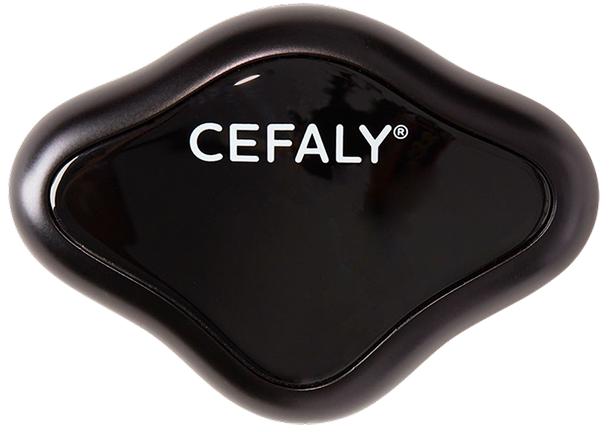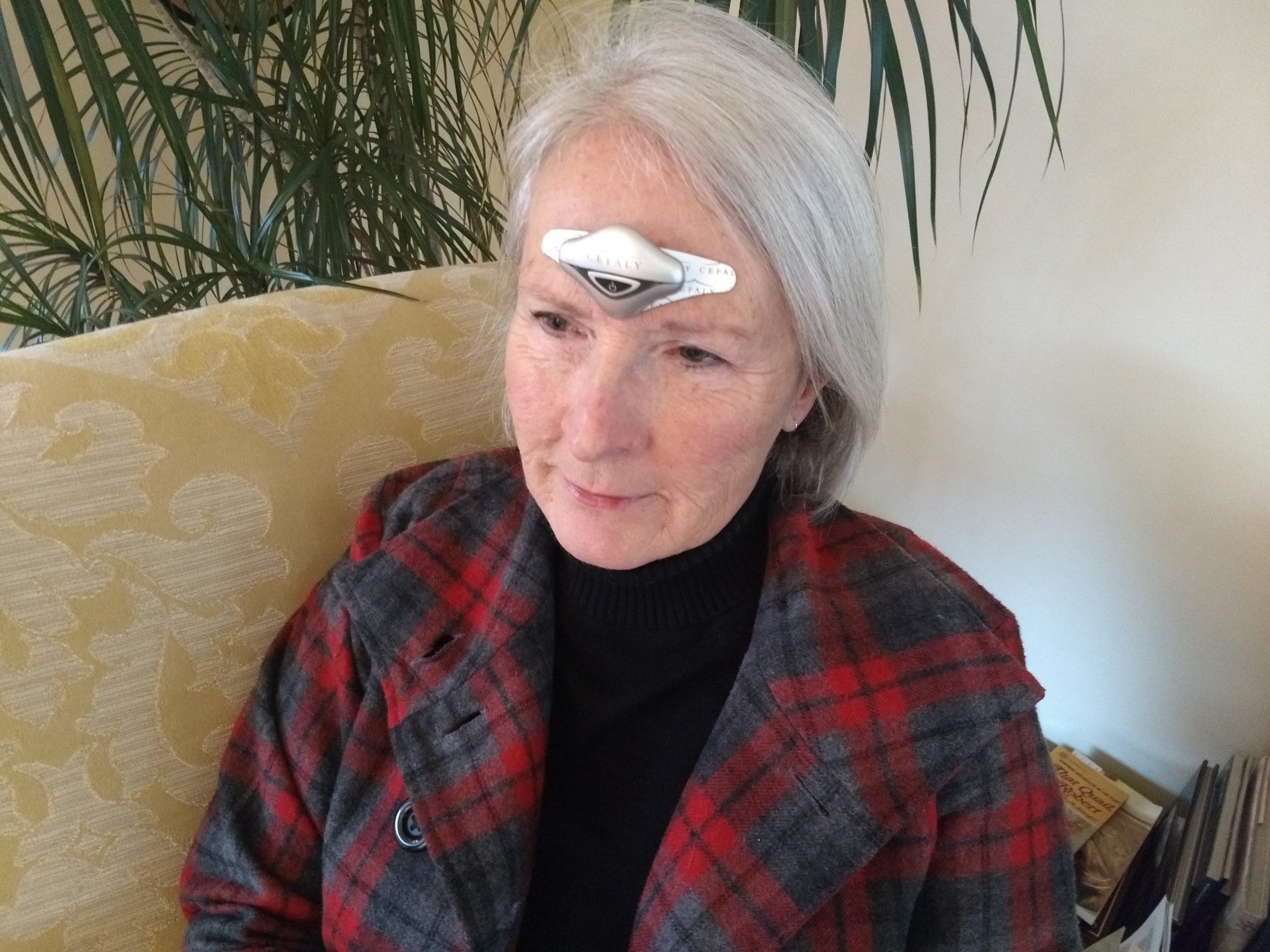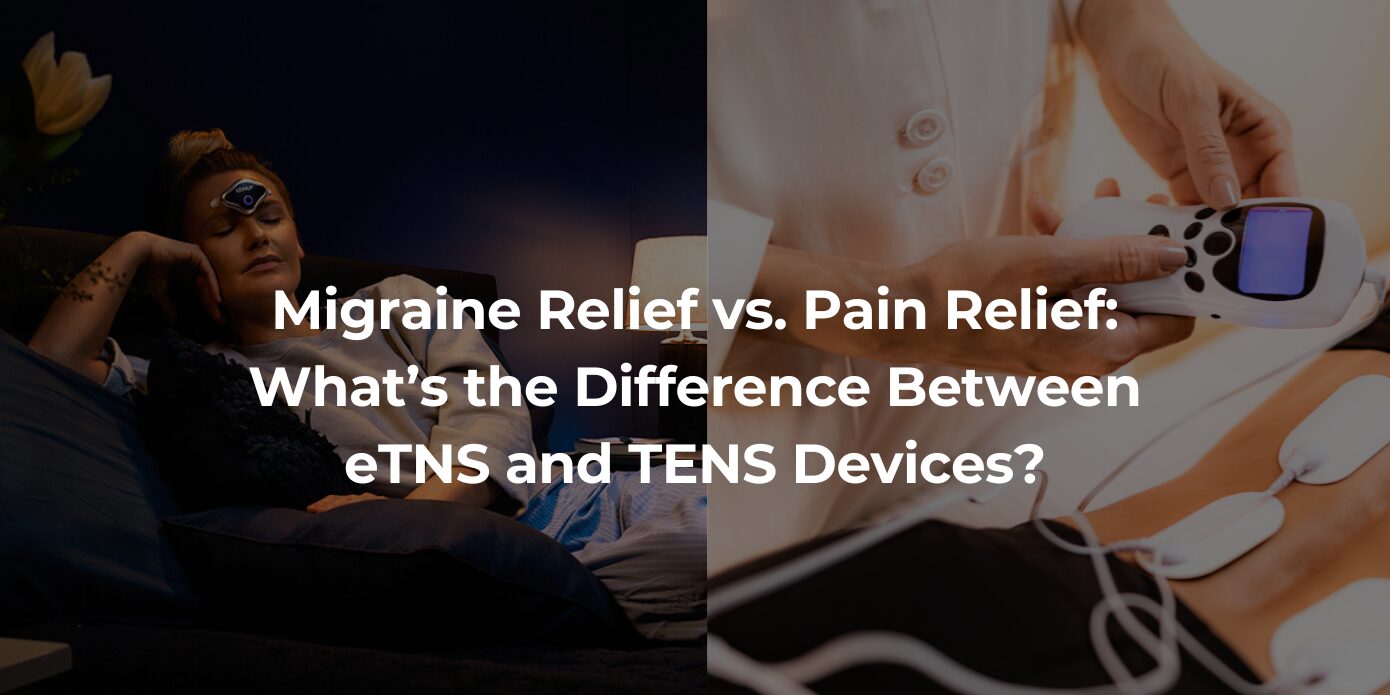Lightning-bolt lines. Shimmering stars. Flashes of light. Tingling hands. For many people with migraine, these phenomena — called aura — are some of the most distinctive symptoms of migraine.
Nearly one-quarter of people with migraine experience accompanying sensory disruptions, including aura. But what causes them? Is there a way to prevent aura or make it go away? Learn more about common migraine aura causes and treatment below.
What is migraine aura?
“Aura” refers to a specific stage of a migraine attack that some people experience. While not everyone who lives with migraine has aura, those who do will generally start noticing symptoms after the prodrome phase and before migraine pain begins. You might also develop aura that isn’t accompanied by migraine pain.
Aura can be disruptive, but it can also be a warning sign that helps you prepare for or possibly prevent a migraine attack.
Types and symptoms of migraine aura
Aura is experienced differently by different people and is not always visual. It may take the form of several symptoms, including:
- Visual: Common changes in vision that accompany migraine aura include blurry or blind spots called scotomas, colored spots, bright stars, flashes of light, kaleidoscope or fireworks effects, or a moving, growing geometric line that resembles the outline of a fort (this is called a fortification spectrum). You might also see zigzags or other unusual markings.
- Auditory: If you hear music, ringing, buzzing or other noise that isn’t really there, it could be a type of auditory hallucination that precedes migraine attacks.
- Physical: Some people also experience sensorimotor sensations with their auras, such as muscle weakness, numbness or tingling in the hands or feet, weakness on one side of the body, dizziness, vertigo, or the sensation of pins and needles in the arms and legs. Aura might also manifest as a lack of any sensory feeling at all. Very rarely, people may also faint or experience partial paralysis.
- Olfactory: While sensitivity to smell is a common symptom among people with migraine, those with aura might also hallucinate smells during this stage.
- Linguistic: Sometimes, people who have migraine experience difficulty with speech, such as struggling to find the correct words or mumbling or slurring their words. This is also called dysphasic aura.
90-day money back guarantee FDA-cleared financing availableGet Drug-Free Migraine Relief With CEFALY
Shop Now

What causes aura in migraine?
Researchers believe aura is caused by cortical spreading depression, though it’s still unclear exactly why or how this takes place. Aura may accompany a migraine, regardless of what has triggered the attack, and what causes aura in one person may not be the same in another.
Common migraine triggers include:
- Increased stress levels or chronic stress
- Sleep pattern changes, including a lack of sleep or sleeping too much
- Hormonal changes in women
- Skipping meals, eating highly processed foods, or drinking beverages with alcohol, especially wine, or excessive caffeine
- Exposure to bright light, such as strong sunlight
- Intense physical activity that causes overexertion
- Certain medications like oral contraceptives or high blood pressure vasodilators
- Strong smells from substances like smoke, perfume or gas
- Weather and atmospheric pressure changes
Certain characteristics also might impact whether you’re more likely to experience migraine. Women are three times more likely to have the condition than men, and migraine is most common in people between 18 and 44.
Can you prevent aura?
There is currently no way to prevent aura entirely. The best way to avoid triggering migraine with aura is to:
- Understand your migraine: Effective symptom treatment starts with knowing what type of migraine you have. A medical specialist can issue a formal diagnosis based on your history. Migraine with aura is known as a classic or complicated migraine, while migraine without aura is called a common migraine. Hemiplegic migraine is a rare classic migraine subtype that involves one-sided muscle weakness, similar to a stroke.
- Know your triggers: Keep a list of foods, smells, products and environmental conditions that trigger migraine attacks, and use this information to create a more migraine-friendly home and work environment.
- Track your symptoms: Track each symptom you have during a migraine attack so you can better predict whether certain symptoms may precede, accompany or follow an aura disturbance. While your migraine with aura symptoms may not be the same each time, you might be able to spot patterns that can guide your next steps so you can make it through the attack with as few issues as possible.
- Have a care plan: Your migraine care plan should be holistic and focused on your whole person. Prioritize the healthy habits that support your overall well-being and reduce the chance of triggering a migraine, and consider working with a healthcare provider to discuss treatment and management options.
Treatment options and tips for managing migraine
While there is no way to stop aura symptoms on their own, preventive migraine treatments may reduce the incidence of attacks, and abortive migraine treatments can reduce the severity of an attack.
Your healthcare provider can recommend the best over-the-counter or prescription medications to help manage your condition. Some options include:
- Anti-inflammatory pain relievers
- Relief medications like Excedrin Migraine
- Anti-nausea medications to reduce nausea and vomiting
- Dihydroergotamines and triptans that block pain signals in the brain
- Anticonvulsant or antidepressant drugs
Some individuals prefer to use drug-free migraine treatments. The CEFALY device attaches to an adhesive electrode to stimulate the trigeminal nerve under the skin of the forehead, relieving and preventing migraine attacks. You should use the hour-long ACUTE treatment at the earliest sign of a migraine attack and the 20-minute PREVENT program daily. To maximize the benefits of your treatment, adjust the intensity so that it’s both comfortable and noticeable.
Frequently asked questions about migraine with aura
If you have or suspect migraine with aura, these frequently asked questions may help you find the answers you need.
How long does aura last?
Aura is short-lived, typically lasting no more than an hour, regardless of how that aura manifests. You might develop more than one sign of aura at once.
Having multiple migraine auras in a row could indicate status migrainosus, a rare but severe type of migraine that lasts several days.
Can you experience aura without migraine pain?
Yes. One of the most common instances of aura without migraine pain is silent migraine, a condition that impacts a small percentage of people. Though you might not experience the intense pain that comes with traditional migraine attacks, aura symptoms can still be debilitating and prevent you from living life to the fullest.
A stroke can sometimes mimic the symptoms of aura. If you’re experiencing aura for the first time or have unfamiliar symptoms, see your healthcare provider right away.
When should I see a doctor about migraine with aura?
If your aura or migraine pain persists beyond the typical time frame or worsens over time, contact your doctor right away. You should also schedule an appointment if this is the first time your migraine has been accompanied by aura, if the type of aura has changed, or if you’re older than 40 and experience migraine aura for the first time.
Trust your instincts when it comes to migraine symptoms. If something doesn’t feel right or normal, seek emergency care. If possible, ask a neighbor or loved one to drive you to the hospital during active attacks.
How is migraine with aura diagnosed?
If you think you have experienced aura — with or without migraine — talk to your doctor. They will ask about your symptoms, including the type, severity, frequency and estimated start date. They will also assess your medical history to rule out other possibilities. In some cases, you might be referred to a specialist who can provide specific insights about your type of migraine and aura symptoms.
Most healthcare providers diagnose migraine with aura based on a similar set of criteria. For example, you must have had two attacks accompanied by one or more aura symptoms, whether visual, motor, sensory or somewhere in between. You may also need to have various accompanying characteristics, such as:
- A single manifestation of aura that gradually spreads over a period of five or more minutes.
- Experiencing two or more symptoms of aura at the same time.
- Pain that begins within an hour of aura symptoms.
There isn’t a certain test that can diagnose migraine type, so it’s vital that you keep a list of the different symptoms you experience with each migraine attack. Include any disturbances that could signify aura. This information, paired with other tests and questionnaires to rule out similar conditions, will help your healthcare provider reach a more accurate diagnosis.
What is the prognosis for someone who has migraine with aura?
Like most people with this condition, individuals diagnosed with migraine with aura can have a full, healthy, enjoyable life with the right preventive care and treatment plan to manage symptoms. Because there is some association between migraine with aura and the likelihood of stroke, it’s important to visit your healthcare provider regularly to discuss any new or worsening symptoms.
Most aura manifestations on their own are not dangerous unless you’re driving or engaged in another activity that requires you to see or think clearly or maintain balance. If you’re behind the wheel when aura symptoms begin, pull over and make sure you’re in a safe place. If possible, do not engage in any activity while experiencing your symptoms, including looking at screens, to minimize their disruption.
Sit or lie down in a quiet, dark room and close your eyes until the worst of it subsides. Be sure to stay hydrated, nourished and well-rested to support your overall health.
Alleviate your migraine symptoms with CEFALY
CEFALY Connected offers both preventive treatments and relief during a migraine attack. It’s the #1 FDA-cleared device designed for acute and preventive treatment of migraine with or without aura in those 18 years or older. CEFALY has no serious adverse effects and doesn’t require a prescription.
Learn more about CEFALY to get started, or buy your device today to experience the benefits for yourself.
















